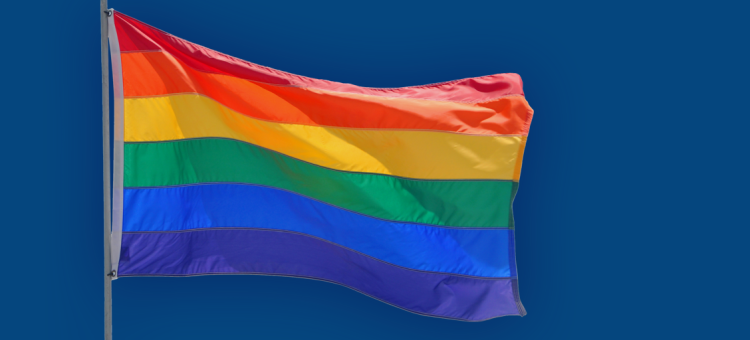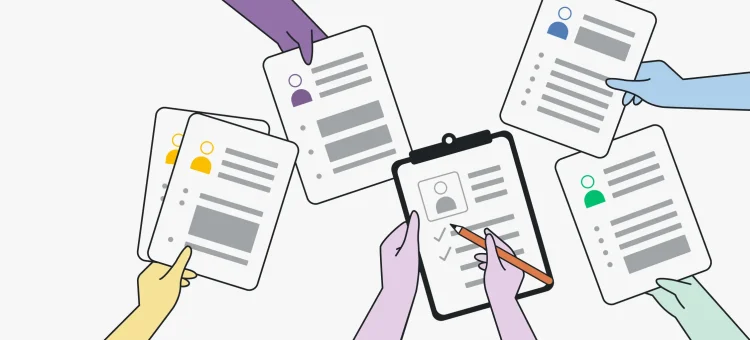Key Findings:
- Transgender workers are most likely to work at gender inclusive workplaces–but a majority of transgender workers still say that employers do not do enough to support their community
- Transgender adults deal with a larger number of microaggressions than cisgender adults, and more often
- Those who already know a transgender or non-binary individual are much more likely to be allies of the transgender and nonbinary community
- Majority of U.S. adults oppose legislation that would prohibit classroom lessons about sexual orientation or gender in school
Transgender workers are most likely to work at gender inclusive workplaces–but a majority say that employers do not do enough to support their community
Transgender workers are more than twice as likely as cisgender workers to say their employers are not doing enough to support transgender employees (38% vs. 16%). But, they are also twice as likely to say their employers are doing too much (26% vs. 13%). It’s possible these transgender individuals prefer less attention on their gender identity.
Cisgender workers are much more likely to take the middle view: 66% say say their employers are doing “just enough” to accommodate transgender employees, compared with 36% of transgender employees who say the same.
Nearly all transgender workers (86%) say it's important to them that their employers have gender inclusive policies, while only half (52%) of cisgender workers say the same. Transgender workers are more likely to say that inclusive policies are important than LGBTQ (75%) and nonbinary (71%) workers.
- LGBTQ workers (75%) are much more likely than non-LGBTQ adults (49%) to say gender inclusive policies at work are important to them.
- 71% of noncomforming workers, 60% of women, and 45% of men say gender inclusive policies at work are important to them.
- Young workers are more likely than older workers to say gender inclusive policies at work are important to them: 61% of adults age 18-34, 49% of adults age 35-64, 48% of adults age 65+.
- People of color are more likely to say gender inclusive policies at work are important to them: 66% of Asian people, 54% of Hispanic people, 58% of Black people, 50% of white people.
Workers who are Democrats or who lean to the Democratic party are more than twice as likely as workers who are Republicans or who lean towards the GOP (77% vs. 31%) to say gender inclusive policies at work are important to them. U.S. regions that typically lean Democratic reflect this trend, as 58% of those who live in the Northeast and 57% of those who live in the West say gender inclusive policies in the workplace are important to them, compared to 51% of those living in the Midwest and 49% of those living in the South.
Transgender workers’ emphasis on gender inclusive policies may lead them to seek workplaces that encourage inclusive practices. In fact, 81% of transgender workers say their employers encourage inclusive practices, compared with 61% of cisgender workers who say the same.
- Identical numbers of transgender and cisgender workers say their workplaces have a diversity and inclusion policy or practice (46% of transgender workers, 46% of cisgender workers)
- Similar numbers of transgender and cisgender workers’ workplaces have employee resource groups (28% of transgender workers, 26% of cisgender workers)
- Transgender workers are nearly twice as likely to have the following in their workplace than cisgender workers
- Gender neutral bathrooms (38% vs. 19%)
- pronoun sharing (45% vs 23%)
- Inclusive bathroom policies (32% vs 13%)
- Pronoun nametags (21% vs 10%)
Transgender adults deal with a larger number of microagressions than cisgender adults, and more often
Some microagressions are somewhat common to the overall U.S. population, but transgender, individuals experience them to a much higher degree.
- Transgender adults are more than twice as likely than cisgender adults to say they codeswitch often (55% vs 20%)
- 45% of transgender adults but only 25% of cisgender adults experience mansplaining often
Individuals who say they experience these microaggressions “often”
Those with marginalized identities are also more likely to say they codeswitch and experience mansplaining:
- LGBTQ adults are much more likely than cisgender, heterosexual adults to say they codeswitch often (35% vs 18%), and experience mansplaining often (34% vs 24%).
- 31% of gender diverse adults codeswitch often compared, with 20% of men and 21% of women.
- 34% of gender diverse adults and 29% of women experience mansplaining often compared with 21% of men.
Other microagressions are rare among the general population, but very common among the transgender community.
- Transgender adults are 14 times as likely than cisgender adults to say they hide their gender often (43% vs 3%)
- Transgender adults are 3 times more likely than cisgender adults to say they sometimes hide their gender (15% vs 5%)
- Nearly all (84%) cisgender adults say they rarely hide their gender, compared to 20% of transgender adults who say the same.
- Transgender adults are nearly 11 times as likely than cisgender adults to say others often accidentally use the wrong gender markers when referring to them (43% vs 4%).
- Transgender adults are 3 times more likely than cisgender adults to say sometimes others accidentally misgender them (27% vs 8%)
- Nearly all (85%) cisgender adults say others rarely accidentally misgender them, compared to 25% of transgender adults who say the same.
- Transgender adults are 10 times as likely than cisgender adults to say others often intentionally use the wrong gender markers when referring to them (40% vs 4%).
- Transgender adults are 3 times more likely than cisgender adults to say sometimes others intentionally misgender them (26% vs 8%)
- Nearly all (85%) cisgender adults say others rarely intentionally misgender them, compared to 32% of transgender adults who say the same.
- Transgender adults are 9 times more likely than cisgender adults to say others often judge them for using the bathroom that matches their gender (36% vs 4%).
- Transgender adults are 6 times more likely than cisgender adults to say sometimes others judge them for using the bathroom that matches their gender (24% vs 4%)
- Nearly all (89%) cisgender adults say others rarely judge them for using the bathroom that matches their gender, compared to 37% of transgender adults who say the same.
Individuals who say they experience these microaggressions “often”
Among the LGBTQ community, Hispanic adults are much more likely than white adults to say they deal with microaggressions.
- Hispanic LGBTQ adults are nearly 3 times more likely to be intentionally misgendered than white LGBTQ adults (20% of Hispanic LGBTQ adults, 14% of Black LGBTQ adults, 8% of white LGBTQ adults).
- Hispanic LGBTQ adults are twice as likely to be accidentally misgendered than white LGBTQ adults (20% of Hispanic LGBTQ adults, 16% of Black LGBTQ adults, 10% of white LGBTQ adults).
- Hispanic LGBTQ adults are twice as likely to say others often judge them for using the bathroom that matches their gender (18% of Hispanic LGBTQ adults, 11% of Black LGBTQ adults, 8% of white LGBTQ adults).
- Hispanic LGBTQ adults are nearly twice as likely than white LGBTQ adults to say they hide their gender identity often (18% of Hispanic LGBTQ adults, 12% of Black LGBTQ adults, 10% of white LGBTQ adults).
Those who already know a transgender or non-binary individual are much more likely to be familiar with gender neutral language
Adults in the U.S. who know a transgender or non-binary person are more likely than those who don’t know to have a better understanding of gender neutral language.
- Nearly all (84%) adults who know a transgender or non-binary person say they are familiar with using gender neutral language, compared with half (52%) of adults who don’t know a transgender or non-binary person–a difference of 32%.
- 7 in 10 (70%) adults who know a transgender or non-binary person are comfortable using gender neutral pronouns, compared with half (51%) of adults who don’t know a transgender or non-binary person–a difference of 19%.
- 6 in 10 (62%) adults who know a transgender or non-binary person say it would not be difficult for them to use gender neutral pronouns, compared with half (49%) of adults who don’t know a transgender or non-binary person.
In fact, nearly all (94%) individuals who know a transgender person say they understand what it means to be transgender, compared with 80% of people who don’t know a transgender person.
Further, whether an individual knows a transgender person seems to color their opinion on whether society does enough, or not, for the transgender community. Those who know a transgender person are much more likely to say society does too little to support transgender or nonbinary individuals than those who do not know a transgender person (44% vs 31%).
Overall, nearly 6 in 10 (59%) adults in the U.S. know someone who is transgender or nonbinary. Those who know a transgender or nonbinary person are more likely to have a marginalized gender or sexual orientation themselves:
- 3 in 4 LGBTQ adults know a transgender or nonbinary person, compared with about half of cisgender, heterosexual adults (78% vs 57%).
- More nonconforming individuals (77%) and women (62%) than men (56%) say they know a transgender or nonbinary person.
Majority of U.S. adults oppose legislation that would prohibit classroom lessons about sexual orientation or gender in school
About half (53%) of U.S. adults oppose of legislation that would prohibit classroom lessons about sexual orientation or gender in school, while 43% support.
- 61% of Democrats, 52% of Independents, and 49% of Republicans oppose such legislation.
- White adults are most likely to oppose (58% of white adults oppose, 47% of Hispanics oppose, 46% of Asian adults oppose, 43% of Black adults oppose)
Read more about our polling methodology here.
Click through all the results in the interactive toplines below:
Do you follow news coverage by any of the following media organizations on a daily or almost daily basis? (Select all that apply.)
Gender Answer Total Male Female Not listed/non-conforming Unweighted N 15,527 7,060 8,094 373 FOX News 35%37%33%22%CNN 30%31%30%28%None of the above 21%20%21%25%New York Times 19%19%19%23%MSNBC 17%18%17%13%NPR 15%16%15%15%Washington Post 14%14%14%16%Wall Street Journal 11%14%9%9%Buzzfeed 7%6%8%11%Breitbart 3%4%2%1%Drudge Report 2%3%1%2%Other (please specify) 22%23%21%21%No answer 4%4%4%7%Question wording: Do you follow news coverage by any of the following media organizations on a daily or almost daily basis? (Select all that apply.)Survey dates: –How often, if at all, does the media you follow mention transgender or nonbinary people?
Gender Answer Total Male Female Not listed/non-conforming Unweighted N 15,527 7,060 8,094 373 NET Often 38%39%37%45%Always 10%10%10%12%Often 28%29%27%33%Sometimes 39%39%39%26%NET Rarely 20%19%21%22%Rarely 13%12%14%12%Never 7%7%7%10%No answer 3%3%4%7%Question wording: How often, if at all, does the media you follow mention transgender or nonbinary people?Survey dates: –How well do you understand what it means for someone to be transgender?
Gender Answer Total Male Female Not listed/non-conforming Unweighted N 15,527 7,060 8,094 373 NET well 87%85%90%85%Very well 56%52%59%67%Somewhat well 31%32%31%17%NET Not well 11%13%8%12%Not so well 7%8%5%6%Not at all well 4%5%3%6%No answer 2%2%2%4%Question wording: How well do you understand what it means for someone to be transgender?Survey dates: –Do you support or oppose legislation that would prohibit classroom lessons about sexual orientation or gender in school?
Gender Answer Total Male Female Not listed/non-conforming Unweighted N 15,527 7,060 8,094 373 NET support 43%45%42%36%Strongly support 25%27%24%23%Somewhat support 18%17%19%13%NET Oppose 53%53%54%59%Somewhat oppose 17%16%17%12%Strongly oppose 37%36%36%46%No answer 3%3%4%6%Question wording: Do you support or oppose legislation that would prohibit classroom lessons about sexual orientation or gender in school?Survey dates: –In general, would you say today’s society does too much, too little, or just enough to support transgender or nonbinary individuals?
Gender Answer Total Male Female Not listed/non-conforming Unweighted N 15,527 7,060 8,094 373 Too much 37%44%30%24%Too little 38%31%44%56%Just enough 21%22%21%15%No answer 4%3%5%5%Question wording: In general, would you say today’s society does too much, too little, or just enough to support transgender or nonbinary individuals?Survey dates: –Do you know anyone who is transgender or nonbinary?
Gender Answer Total Male Female Not listed/non-conforming Unweighted N 15,527 7,060 8,094 373 Yes 59%56%62%77%No 38%42%35%19%No answer 3%2%3%4%Question wording: Do you know anyone who is transgender or nonbinary?Survey dates: –How familiar are you, if at all, with using gender-neutral pronouns to describe someone?
Gender Answer Total Male Female Not listed/non-conforming Unweighted N 15,527 7,060 8,094 373 NET Familiar 70%67%73%78%Very familiar 35%32%37%61%Somewhat familiar 35%35%36%16%NET Not familiar 27%30%24%18%Not so familiar 15%16%14%8%Not at all familiar 12%14%10%10%No answer 3%3%3%5%Question wording: How familiar are you, if at all, with using gender-neutral pronouns to describe someone?Survey dates: –How comfortable, if at all, would you feel using a gender-neutral pronoun to refer to someone if they asked you to do so?
Gender Answer Total Male Female Not listed/non-conforming Unweighted N 15,527 7,060 8,094 373 NET Comfortable 61%55%66%75%Very comfortable 36%30%41%60%Somewhat comfortable 25%25%25%15%NET Not comfortable 36%43%30%20%Not so comfortable 16%18%15%7%Not comfortable at all 20%25%16%13%No answer 3%2%3%5%Question wording: How comfortable, if at all, would you feel using a gender-neutral pronoun to refer to someone if they asked you to do so?Survey dates: –How difficult would it be for you to use gender-neutral pronouns to refer to someone who asked you to?
Gender Answer Total Male Female Not listed/non-conforming Unweighted N 15,527 7,060 8,094 373 NET Difficult 41%46%37%24%Very difficult 18%23%14%14%Somewhat difficult 23%23%23%10%NET Not difficult 56%51%60%70%Not so difficult 27%28%27%17%Not difficult at all 29%24%33%53%No answer 3%3%3%6%Question wording: How difficult would it be for you to use gender-neutral pronouns to refer to someone who asked you to?Survey dates: –Do you know anyone who uses gender-neutral pronouns such as "they" instead of "he" or "she"?
Gender Answer Total Male Female Not listed/non-conforming Unweighted N 15,527 7,060 8,094 373 Yes 44%40%46%63%No 53%58%50%31%No answer 3%2%3%6%Question wording: Do you know anyone who uses gender-neutral pronouns such as "they" instead of "he" or "she"?Survey dates: –Code-switching refers to changing the language you use or the way you express yourself based on who you are speaking to. How often do you code-switch at work?
Gender Answer Total Male Female Not listed/non-conforming Unweighted N 15,527 7,060 8,094 373 NET Often 20%20%21%31%Always 8%7%7%14%Very often 13%12%13%17%Sometimes 24%24%24%29%NET Rarely 51%53%50%32%Rarely 17%18%17%11%Never 34%35%33%21%No answer 5%4%6%8%Question wording: Code-switching refers to changing the language you use or the way you express yourself based on who you are speaking to. How often do you code-switch at work?Survey dates: –How often do you experience "man-splaining" at work? In other words, how often has someone explained something to you that you already understand?
Gender Answer Total Male Female Not listed/non-conforming Unweighted N 15,527 7,060 8,094 373 NET Often 25%21%29%34%Always 7%6%8%11%Very often 18%15%20%23%Sometimes 32%32%32%29%NET Rarely 38%43%34%29%Rarely 19%21%18%14%Never 19%21%16%15%No answer 5%4%5%7%Question wording: How often do you experience "man-splaining" at work? In other words, how often has someone explained something to you that you already understand?Survey dates: –How often can you identify the gender of a person based on an email they send?
Gender Answer Total Male Female Not listed/non-conforming Unweighted N 15,527 7,060 8,094 373 NET Often 22%24%21%18%Always 6%6%5%8%Very often 17%18%16%10%Sometimes 33%32%33%34%NET Rarely 40%40%40%40%Rarely 20%21%20%19%Never 20%19%20%22%No answer 5%4%6%8%Question wording: How often can you identify the gender of a person based on an email they send?Survey dates: –How often do others intentionally use the wrong gender markers (e.g. pronouns) when referring to you?
Gender Answer Total Male Female Not listed/non-conforming Unweighted N 15,527 7,060 8,094 373 NET Often 5%5%4%18%Always 2%2%2%7%Very often 3%3%3%11%Sometimes 9%9%8%19%NET Rarely 82%83%83%56%Rarely 12%12%12%18%Never 70%71%71%39%No answer 4%4%5%7%Question wording: How often do others intentionally use the wrong gender markers (e.g. pronouns) when referring to you?Survey dates: –How often do others accidentally use the wrong gender markers (e.g. pronouns) when referring to you?
Gender Answer Total Male Female Not listed/non-conforming Unweighted N 15,527 7,060 8,094 373 NET Often 5%5%4%24%Always 2%2%1%7%Very often 3%3%2%17%Sometimes 9%8%8%24%NET Rarely 82%83%83%43%Rarely 13%12%14%11%Never 69%71%69%32%No answer 4%4%5%9%Question wording: How often do others accidentally use the wrong gender markers (e.g. pronouns) when referring to you?Survey dates: –How often do you hide your gender (e.g. by expressing yourself differently or allowing others to use the wrong pronouns) to fit in?
Gender Answer Total Male Female Not listed/non-conforming Unweighted N 15,527 7,060 8,094 373 NET Often 4%4%3%27%Always 2%2%1%9%Very often 2%2%1%18%Sometimes 5%5%5%18%NET Rarely 87%88%88%46%Rarely 5%4%6%9%Never 81%83%82%36%No answer 4%4%5%8%Question wording: How often do you hide your gender (e.g. by expressing yourself differently or allowing others to use the wrong pronouns) to fit in?Survey dates: –How often do others judge you for using the bathroom that matches your gender?
Gender Answer Total Male Female Not listed/non-conforming Unweighted N 15,527 7,060 8,094 373 NET Often 5%5%4%11%Always 3%3%2%7%Very often 2%2%2%3%Sometimes 4%4%4%15%NET Rarely 86%87%87%67%Rarely 3%4%3%10%Never 83%83%84%57%No answer 4%4%5%8%Question wording: How often do others judge you for using the bathroom that matches your gender?Survey dates: –Which of the following categories best describes your employment status?
Gender Answer Total Male Female Not listed/non-conforming Unweighted N 15,527 7,060 8,094 373 Employed, working full-time 52%60%45%41%Employed, working part-time 12%9%15%17%Not employed, looking for work 8%7%8%13%Not employed, NOT looking for work 4%2%5%8%Retired 16%16%17%6%Disabled, not able to work 5%4%6%9%No answer 3%2%3%5%Question wording: Which of the following categories best describes your employment status?Survey dates: –How important is it to you that your employer has gender inclusive policies?
Gender Answer Total Male Female Not listed/non-conforming Unweighted N 10,206 4,828 5,146 232 NET Important 53%45%60%71%Very important 31%25%36%55%Somewhat important 22%20%25%16%NET Not important 45%53%36%27%Not so important 16%18%15%11%Not at all important 28%35%21%16%No answer 3%2%3%2%Question wording: How important is it to you that your employer has gender inclusive policies?Survey dates: –Which, if any, of the following does your workplace encourage? (Select all that apply)
Gender Answer Total Male Female Not listed/non-conforming Unweighted N 10,206 4,828 5,146 232 None of the above 35%37%33%25%Pronoun sharing 23%20%25%36%Inclusive bathroom policy 13%12%14%22%Gender-neutral restrooms 19%16%21%31%Pronoun nametags 11%10%11%18%Employee Resource Groups 26%26%25%33%Diversity and Inclusion policy or practice 45%45%45%51%No answer 4%3%5%4%Question wording: Which, if any, of the following does your workplace encourage? (Select all that apply)Survey dates: –In general, would you say your employer does too much, too little, or just enough to support their transgender or nonbinary individuals?
Gender Answer Total Male Female Not listed/non-conforming Unweighted N 10,206 4,828 5,146 232 Too much 14%19%9%10%Too little 16%13%18%33%Just enough 65%64%68%51%No answer 5%4%6%6%Question wording: In general, would you say your employer does too much, too little, or just enough to support their transgender or nonbinary individuals?Survey dates: –What is your sexual orientation?
Gender Answer Total Male Female Not listed/non-conforming Unweighted N 15,527 7,060 8,094 373 Straight/Heterosexual 83%87%82%30%Bisexual 5%3%7%16%Gay 2%4%0%5%Lesbian 1%0%2%3%Pansexual 1%1%1%13%Heteroflexible 1%1%1%7%Queer 1%0%1%14%Asexual 1%0%1%3%No answer 4%3%5%10%Question wording: What is your sexual orientation?Survey dates: –Are you transgender?
Gender Answer Total Male Female Not listed/non-conforming Unweighted N 15,527 7,060 8,094 373 Yes 2%2%1%29%No 95%96%96%66%No answer 3%3%3%5%Question wording: Are you transgender?Survey dates: –age3
Gender Answer Total Male Female Not listed/non-conforming Unweighted N 15,527 7,060 8,094 373 18 - 34 30%30%28%59%35 - 64 50%51%50%29%65 and up 21%19%23%12%No answer 0%0%0%0%Question wording: age3Survey dates: –Race 5
Gender Answer Total Male Female Not listed/non-conforming Unweighted N 15,527 7,060 8,094 373 White 63%64%63%49%Other 3%3%3%14%Hispanic 16%17%16%21%Black 12%12%13%10%Asian 6%5%6%7%No answer 0%0%0%0%Question wording: Race 5Survey dates: –Party3
Gender Answer Total Male Female Not listed/non-conforming Unweighted N 15,527 7,060 8,094 373 Republican/lean rep 39%46%34%18%Independent no lean 18%17%18%34%Democrat/lean dem 39%34%44%40%No answer 4%3%5%8%Question wording: Party3Survey dates: –



